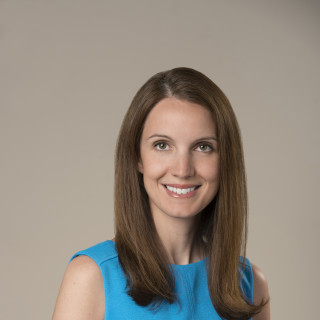
As my husband passed the milestone birthday of 40, he thought it would be a good idea to get a physical exam as it had been several years since he saw a physician. Easy task, right? We soon came to find that the landscape of health care had been changing even faster than we thought.
We had just moved and needed to establish care in a new area. Multiple phone calls to different physician offices resulted in replies of “we aren’t taking new patients,” or “the doctor is moving to concierge medicine and will only be taking the first 600 to sign up and he currently has a panel of 3,000.” My husband, who is not in medicine, asked me for help. After a week of trying to find a doctor to see him, he had made no progress, despite his “good” insurance plan.
Make no mistake, the physician shortage is real and getting worse, and there are multiple causes. First, there has not been an appropriate increase in residency positions in the United States. It is not the number of medical schools. New medical schools continue to open and existing schools are increasing enrollment with well-intentioned efforts to help address the shortage. However, the real bottleneck is not at the medical school level, but in residency positions. The promise of a career as a physician continues to lure bright students into medicine who are more than willing to take on personal loans to pay for their education. But after medical school, many new physicians are finding that there is fierce competition to match into a residency — there are more medical students than residency slots.
Despite the growing population, especially the elderly population, residency spots are not increasing quickly enough — begging the question: why not? If medical school enrollment is increasing, why aren’t residency slots increasing, especially in this time of shortage? The reason is money. While the salary of a resident is small, it is, in most cases, funded by the government. And the government has not yet appropriated funds to allow an increase in residency spots, ultimately causing a shortfall in licensed physicians. Instead, physician alternatives and cost-saving measures are preceding the goal of meeting our nation’s need for timely and appropriate medical care. It is no coincidence that instead of increasing residency spots, state guidelines for nurse practitioners’ scope of practice are changing rapidly. Though billed as a move to provide medical care for patients desperate for access, there is much more to the story.
Increasing use of the term “provider” (versus “physician”) is blurring patients’ understanding of their medical care. A patient who is not a member of the medical profession (i.e., a layperson) cannot be expected to know and understand the nuances of the many emerging medical careers. I am in absolutely no way against nurse practitioners, physician assistants, midwives, or other professionals in health care — I do believe they provide a great service. I believe these other professionals are indeed increasing access to front-line care and are valuable members of the health care team. That said, I am against patients being led to believe that the care they receive from a licensed physician, who completed residency and maintains certification, is equivalent to the care provided by another medical professional without the same rigorous training.
Often, if a patient is not seeing a physician, there will be extra steps involved in that patient’s care. It may be in the form of oversight from a physician who is not in the room, or it may be an extra visit to a specialist (when a family medicine physician might have been able to address the issue at the first visit). Additionally, given that physicians and nurse practitioners have different training, it seems implausible that their competencies are the same. It is reasonable to infer that physicians are better suited to handle complicated patients with multiple comorbidities (a reality even NPs acknowledge).
Patients are under the impression that if they go to an urgent care center or “doctor’s office,” the person in the white coat is a physician. But it is quickly becoming much less likely that the person on the front line is actually an MD. Again, my concern is not that there are multiple types of clinicians, but more that there is a lack of transparency to the patient regarding the level and type of care they are receiving. This lack of transparency is allowing for a shift in the national discussion and, subsequently, a misplaced focus on how best to fix our physician shortage crisis. Rather than focusing on expanding the scope of practice for non-MDs with far less training, we need to lift the artificial cap the government put on Medicare GME 20 years ago. That cap has limited funding for residency positions and made it impossible to develop a physician workforce large enough to care for our growing population.
We need to be putting patients’ interests first. We all have loved ones who will need medical care at one time or another. Allowing our lawmakers to facilitate cost-cutting by drafting policies that suggest we can manage with health care professionals that have less training to provide the same services is wrong. We should be lifting up all health care professions instead of pitting them against each other. We need nurse practitioners. We need midwives. Non-MDs are intelligent professionals with much to offer. However, their training is not the same as a physician’s, and patients should not be led by health insurance companies and the government to believe their roles are equivalent.
The bottleneck in government approval of residency positions, and employers’ push to squeeze more out of every physician, has left many doctors overwhelmed, unable to meet the demands of their patient load. Therefore, we are seeing an increasing migration of physicians to direct primary care (some call it “concierge medicine”) where autonomy is seemingly restored. Additionally, many physicians are leaving medicine altogether, retiring early or even seeking other careers (have you seen the physician side gig group — now 47,000 doctors strong?). Physicians need relief, and adding more patients to an already over-booked day can only work for so long.
The physician shortage is becoming acute — but perhaps that is just what insurance companies and the government want? After all, it drives their push to rapidly expand the legal scope of practice of other health care professionals without sufficient training in the name of providing desperately needed access, all while they continue to deny funding for residency positions. It is a cheaper alternative, no doubt — but transparency is lacking, and our patients deserve better.
Dr. Valerie A. Jones is a board-certified obstetrician/gynecologist who is passionate about women's health care, personal finance for physicians, and motherhood in medicine. Her writings on these topics can be found on her website. Dr. Jones is a 2019–2020 Doximity Fellow.
Illustration Collage by Jennifer Bogartz / Getty Images







